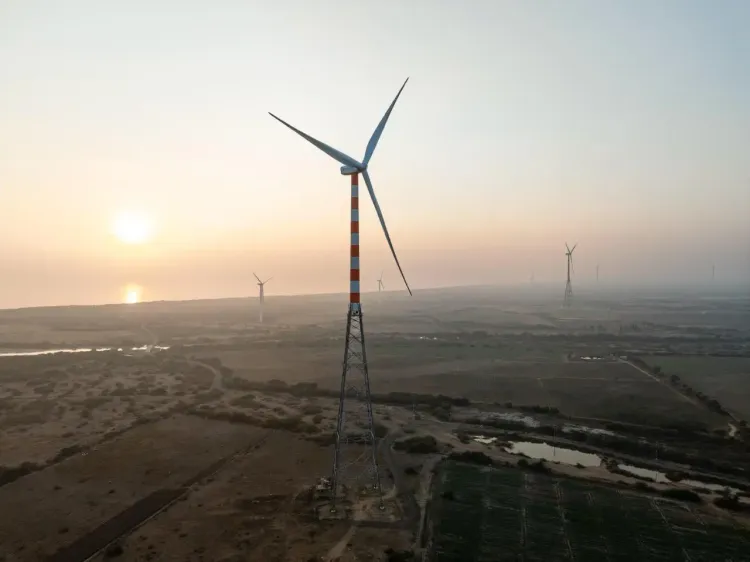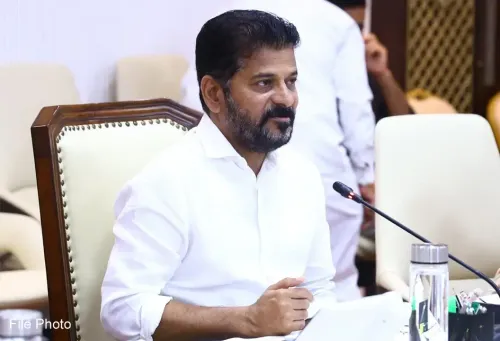India's Wind Power Capacity Set to Reach 63 GW by 2026-27

Synopsis
Key Takeaways
- Projected wind power capacity: 63 GW by 2026-27.
- Annual capacity addition to average 7.1 GW.
- Government initiatives expected to enhance growth.
- Challenges included low tariffs and land issues.
- Hybrid projects to play a significant role in future capacity.
New Delhi, Feb 24 (NationPress) India’s yearly wind power capacity addition is set to more than double to an average of 7.1 gigawatts (GW) in the coming two financial years, a significant increase from 3.4 GW in fiscal year 2023-25. This boost is attributed to government initiatives aimed at accelerating growth, as reported on Monday, which will elevate the nation’s total installed wind power capacity to approximately 63 GW by 2026-27.
Capacity additions during the fiscal years 2023-24 and 2024-25 have remained modest, fluctuating between 6-7 GW due to a limited number of successful wind capacity auctions (5.9 GW in FY21-23 and 5.2 GW in FY23-25), as stated in a Crisil report.
This situation arose from decreased interest from developers, stemming from low tariffs that negatively impacted returns, along with challenges related to land availability and transmission infrastructure in areas with significant wind potential, the report indicated.
Nevertheless, positive trends are emerging that are expected to enhance the pace of capacity additions in the next two financial years.
The government’s emphasis on auctioning hybrid renewable projects (which combine solar, wind, and/or storage) along with a developing favorable cost structure for wind initiatives are likely to stimulate capacity additions, according to the Crisil report.
In addition to a consistent auction rhythm for standalone wind projects, there has been a surge in auctions for hybrid renewable energy projects (which necessitate developers to supply renewable electricity during peak demand hours — evening and early morning).
It is anticipated that 30–50 percent of the capacities from these hybrid projects will derive from wind power, as they produce electricity during peak load periods, unlike solar power, which predominantly generates during daylight hours.
Moreover, as these hybrid projects assist distribution companies (discoms) in managing power scheduling during critical times, they are likely to be favored in offtake agreements and experience rapid growth, the report noted.
According to Ankit Hakhu, Director at Crisil Ratings, the nation has over 30 GW of hybrid projects in the pipeline expected to be commissioned within the next 2-4 years, contributing to the anticipated increase in wind capacity additions.
“There is also visible traction in the signing of power purchase agreements (PPAs), with more than 60 percent of the projects auctioned by March 2024 having their PPAs finalized by January 2025,” he remarked.









